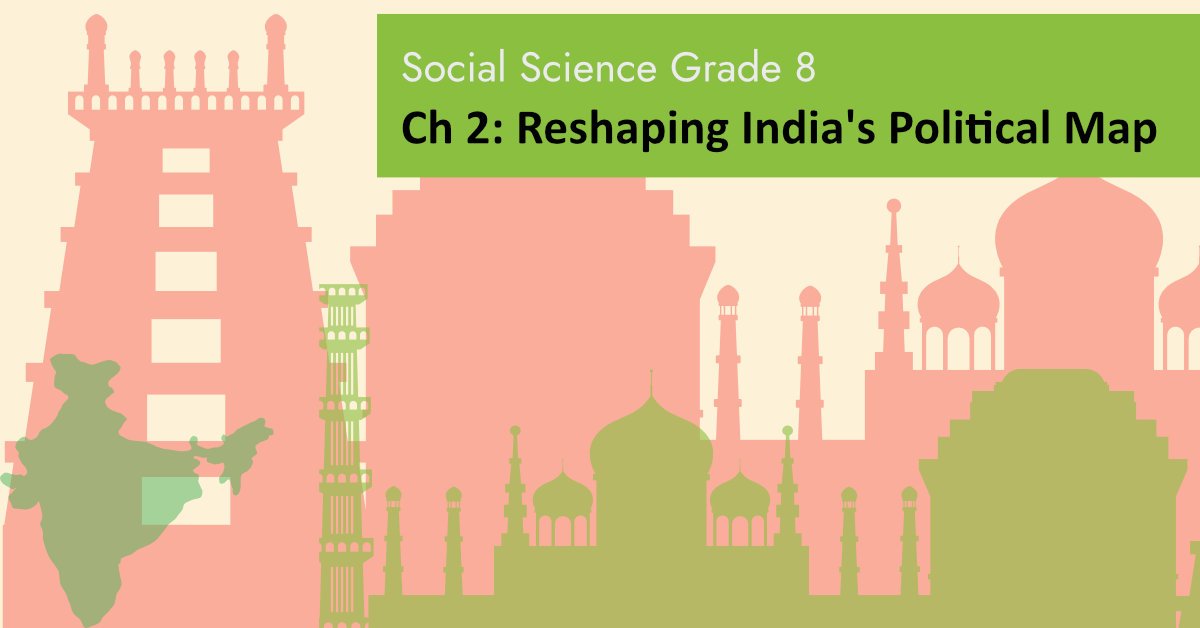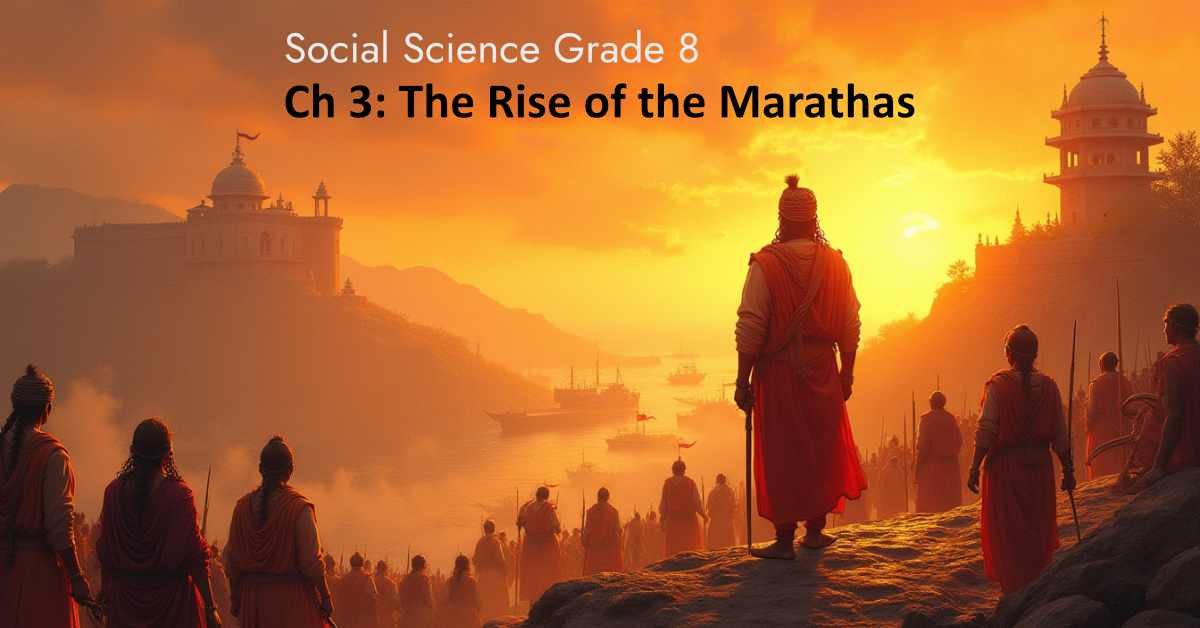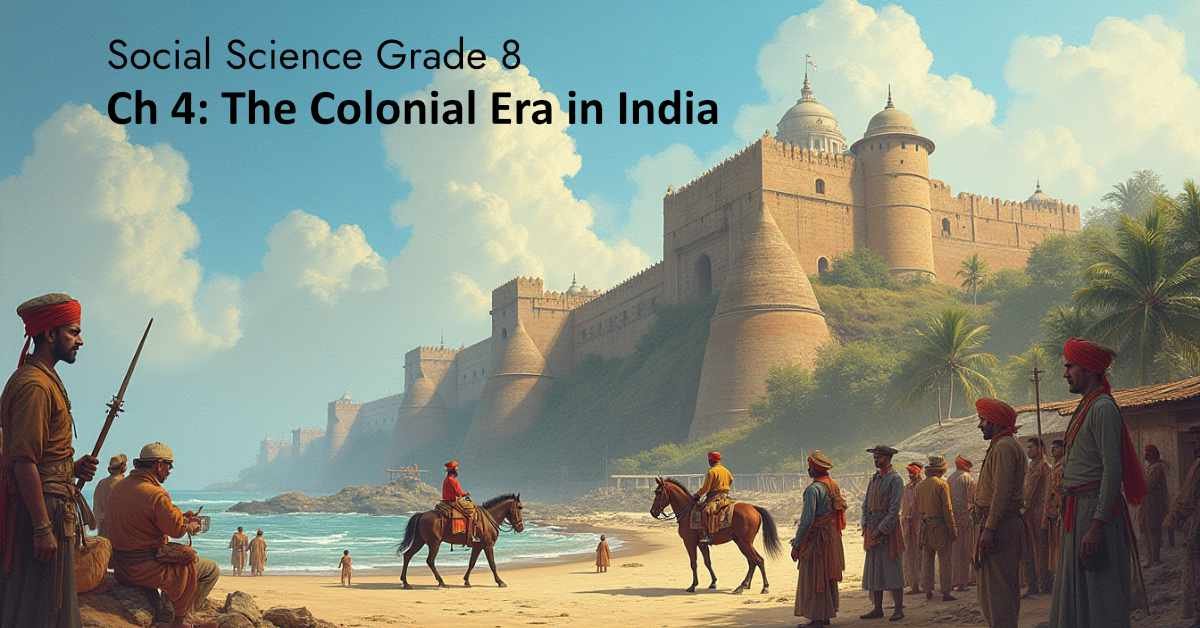The Exploring Society India and Beyond Class 8 chapter 2 Reshaping India’s Political Map, explores how India’s landscape changed dramatically between the 11th and 17th centuries. Invasions, new kingdoms, brave resistance, and evolving administration shaped this period.
You’ll travel from the rise and fall of the Delhi Sultanate, to the splendor of the Mughals and Vijayanagara, to the courage of the Rajputs, Ahoms, Gond rulers, and Sikhs. Through it all, you’ll discover how society adapted, rebuilt, and blended cultures to form a resilient and dynamic India
Reshaping India’s Political Map Worksheet
The chapter “Reshaping India’s Political Map” takes you on a journey through one of the most dynamic phases of Indian history, between the 11th and 17th centuries. During this period, India witnessed frequent invasions from the north-west, which led to the rise of new dynasties and the decline of old kingdoms.
The Delhi Sultanate emerged as a powerful force but faced continuous challenges from regional rulers like the Rajputs, the Hoysalas, and the Gonds. Later, the Vijayanagara Empire in the south grew into a strong centre of political and cultural activity, while the Mughals built one of the largest and most influential empires in Indian history.
At the same time, many rulers and communities—such as the Ahoms in Assam, the Sikhs in Punjab, and the Rajputs in Rajasthan—fought bravely to protect their land and culture. Leaders like Rana Pratap, Rani Durgavati, and Lachit Borphukan became symbols of courage and resistance.
Looking for answers to the question given in the text book? Download our free Class 8 Social Science NCERT Solutions – complete with Q&A, MCQs, fill in the blanks, and more. Ideal for revision, homework, and exam prep! Joins us on WhatsApp for more worksheets.
Also Download:
Social Science Worksheets Class 8
Science Worksheets for Class 8 Curiosity
Hindi Worksheets for Class 8 Malhar
Maths Worksheets for Class 8
Reshaping India’s Political Map class 8 Notes
The Medieval Period (11th–17th centuries)
- Many invasions from Central Asia (Turkic, Afghan dynasties) reshaped India’s political boundaries.
- Old kingdoms fell; new empires like the Delhi Sultanate, Vijayanagara, and Mughals emerged.
- Despite political turmoil, economic, cultural, and social life continued to flourish.
Rise & Fall of the Delhi Sultanate
- Established after 1192 CE with the defeat of Prithviraj Chauhan.
- Ruled by five Turkic-Afghan dynasties (Mamluk, Khilji, Tughlaq, Sayyid, Lodi).
- Marked by instability, violent successions, frequent wars, rapid expansion—e.g., Ala-ud-din Khilji’s military campaigns, repelling Mongols.
Resistance to the Sultanate
- Southern dynasties like the Hoysalas and Eastern Gangas remained independent.
- Fragmentation led to regional powers like the Bahmani Sultanate and later Deccan Sultanates.
- Mewar under Rana Kumbha maintained autonomy through strong forts and leadership.
The Vijayanagara Empire
- Founded in the 14th century by Harihara and Bukka, once governors under Tughlaq.
- Rivalled the Deccan Sultanates; peaked under Krishnadevaraya in the 16th century—military might, arts, literature, temples.
- Fell after the Battle of Talikota (1565).
Social Science class 8 Chapter 2 Question Answer
Q1. How did foreign invasions reshape India’s political boundaries?
Answer: Invasions by Turkic, Afghan, and later Mughal forces toppled older kingdoms and created empires like the Delhi Sultanate and Vijayanagara. Boundaries constantly shifted due to wars, alliances, and resistance from regions like Mewar and Assam.
Q2. What was the impact of invasions on society and the economy?
Answer: Though invasions caused destruction, society rebuilt with resilience through temple economies, guilds, the hundi system for trade, and agriculture; despite heavy taxes and displacement, India’s economy stayed vibrant.
Q3. Name two rulers or kingdoms that resisted Delhi Sultanate and their strategies.
Answer: Mewar under Rana Kumbha resisted using strong forts; Hoysalas held off invasions through regional power, later absorbed into Vijayanagara.
Q4. What led to the decline of the Mughals under Aurangzeb?
Answer: Aurangzeb’s religious intolerance (reimposed jizya, temple destruction), prolonged Deccan wars, and draining of resources caused widespread rebellions and weakened the empire after his death.
Q5. How did Ahom kingdom retain independence from Mughal expansion?
Answer: Using the paik system to mobilize locals, exploiting geography (rivers, forests), and employing guerrilla tactics. The Battle of Saraighat (1671) under Lachit Borphukan defeated a larger Mughal army, securing Assam’s autonomy.
Class 8 Social Science Chapter 2 MCQs
Q1. Which dynasty did NOT belong to the Delhi Sultanate?
A) Khilji B) Tughlaq C) Mughal D) Lodi
Q2. Who founded the Vijayanagara Empire?
A) Babur & Humayun
B) Rana Kumbha & Maharana Pratap
C) Harihara & Bukka
D) Guru Nanak & Guru Gobind Singh
Q3. Under which emperor did Indian miniature painting flourish?
A) Aurangzeb
B) Akbar
C) Babur
D) Sher Shah Suri
Q4. The system where peasants or villagers provided service in exchange for land in Assam was called:
A) Mansabdari
B) Jagirdari
C) Paik
D) Iqta
Q5. Who led the Ahom forces to victory in the Battle of Saraighat?
A) Maharana Pratap
B) Lachit Borphukan
C) Rana Kumbha
D) Krishnadevaraya
Answer:
C) Mughal
C) Harihara & Bukka
B) Akbar
C) Paik
B) Lachit Borphukan



